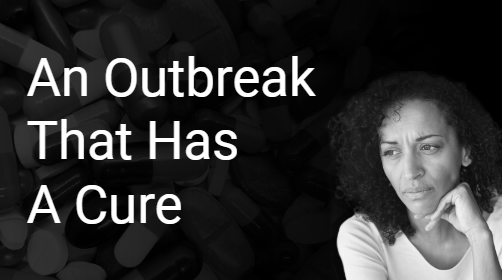Opioid Epidemic: An Outbreak That Has A Cure
There is a fatal epidemic that affects every region in America. Their victims are not only the sick and old, but also the healthy and young. It does not discriminate between the seasons of winter, spring, summer, or fall. In a single day, more than 130 people die from this epidemic. This is not the coronavirus or even a virus at all, but rather the opioid epidemic that poses a great threat to Americans. The misuse and addiction to opioids is a serious national crisis that affects public health as well as social and economic welfare.
What is the Opioid Epidemic?
In the late 1990s, prescriptions for opioid pain relievers increased and unfortunately, many did not realize how addictive opioids they actually were and it was too late. There was widespread misuse of both prescription and non-prescription opioids, and many patients became dependent on these medications and sought after stronger illicit opioids. In 2018, 46,802 Americans died as a result of an opioid overdose and an estimated 1.7 million people in the United States suffered from substance use disorders related to prescription opioid pain relievers.
How is the Opioid Epidemic Being Treated?
While the statistics and trends sound terrifying, The US Department of Health and Human Services (HHS) and The National Institutes of Health (NIH) have made it their priority to prevent opioid misuse, treat opioid use disorders, and manage pain. The HHS focused on five major priorities: improving access to treatment and recovery services, promoting use of over-dose reversing drugs, strengthening our understanding of the epidemic through better public health surveillance, providing support for cutting-edge research on pain and addiction, and advancing better practices for pain management. The NIH is finding new and better ways to prevent opioid misuse, treat opioid use disorders, and manage pain by finding safe, effective, non-addictive strategies to manage chronic pain, discovering new, innovative medications and technologies to treat opioid use disorders, and improve overdose prevention and reversal interventions to save lives and support recovery. One reversal intervention is Naloxone, an antidote medication designed to rapidly reverse opioid overdose. Naloxone can block the effects of opioids in the body and can reverse a breathing emergency when there is an opioid overdose. Naloxone is highly effective, and an excellent tool to save lives.
Naloxone: One Cure to the Opioid Epidemic
The US Surgeon General released an advisory on naloxone and opioid overdoses, writing, “For patients currently taking high doses of opioids as prescribed for pain, individuals misusing prescription opioids, individuals using illicit opioids such as heroin or fentanyl, health care practitioners, family and friends of people who have an opioid use disorder, and community members who come in contact with people at risk for opioid overdose, knowing how to use naloxone and keeping it within reach can save a life.” Naloxone is a life-saving antidote that can be used in a respiratory emergency. When used with overdose education, naloxone can decrease death in communities when readily available to members of the community. Therefore, it is important to provide education and accessibility of naloxone to not only patients who have high risk of an opioid overdose, but for others who could potentially save a life when coming across a person who is having a respiratory emergency. Increasing naloxone availability and education can be the ultimate cure for the opioid epidemic.
Caught Between Two Epidemics
While fighting the opioid epidemic, many patients are faced with socially isolating themselves and staying at home during the coronavirus pandemic. Making sure patients are getting the appropriate treatment and also protecting themselves right now can be difficult. If patients do not get the proper medication to manage their chronic pain and opioid-use-disorder, this can lead to relapse and could potentially result in a fatal overdose. Recovery groups and law enforcement are continuing supplying naloxone to the community and at-risk patients to prepare for higher rates of overdose while patients are in isolation in this stressful time. Fortunately, many clinics and treatment centers have provided mobile services, delivery, and even telemedicine to increase access to their patients who are in quarantine. In this time of isolation, it is important for patients to have easy access to treatment and the necessary emergency medications, such as naloxone, to prevent relapse and overdoses.
– Michelle To, Student Pharmacist at URI College of Pharmacy




